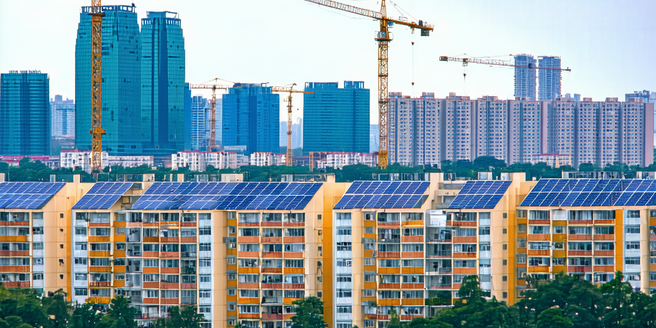Municipal Housing Strategies

Understanding the Current Housing Landscape
The current housing landscape is characterized by a complex set of challenges and opportunities. Urbanization, population growth, and economic factors have led to significant transformations in housing demands. Municipalities are grappling with how to accommodate increasing populations while ensuring affordability and sustainability. At the same time, the economic disparities further widen the gap between housing supply and demand. Historical policies and zoning regulations often complicate these issues, making it crucial to rethink strategies. The shift towards more inclusive, equitable housing policies is gaining momentum, driven by advocacy from both government and grassroots organizations. This reshaping of the landscape requires proactive measures from all stakeholders, including planners, developers, and policymakers, to foster communities that are resilient and adaptable to future changes.
Key Challenges in Municipal Housing
Navigating municipal housing challenges requires addressing several key issues. High land costs continue to drive up housing prices, making affordability a pressing concern for many communities. Additionally, bureaucratic hurdles in the permitting and approval process often delay the development of new housing projects. This is further compounded by restrictive zoning laws that limit the diversification of housing types, thus preventing the efficient use of land for high-density developments. Municipalities must also contend with aging infrastructure, which demands renovations and maintenance, adding to the fiscal burden. Another significant challenge is the public resistance to change, where community members might oppose new developments due to concerns about neighborhood character and density. These challenges necessitate comprehensive approaches that consider the diverse needs of the population while promoting sustainable urban growth.
Innovative Approaches to Public Housing
Public housing initiatives are evolving with the integration of innovative approaches that prioritize sustainability and community integration. Unlike traditional methods that solely focus on the provision of housing units, contemporary strategies emphasize mixed-use developments that incorporate residential, commercial, and public spaces. This fosters a sense of community and promotes economic activity within neighborhoods. There is also a growing trend towards green building practices, which not only reduce environmental impacts but also provide cost savings in terms of energy efficiency for residents. Modular construction methods offer another innovative solution by reducing construction time and costs. Furthermore, public-private partnerships are emerging as vital players in funding and developing these housing projects. These collaborations leverage resources and expertise from various sectors, leading to more comprehensive and successful outcomes in public housing schemes.
The Role of Technology in Housing Solutions
Technology plays a pivotal role in revolutionizing housing solutions, providing tools and innovations that enhance both construction efficiency and resident experience. Digital platforms and applications streamline the housing market by improving access to listings and facilitating virtual tours, which can expedite the buying or renting process. In construction, technology is driving advances in building techniques, such as 3D printing and prefabrication, which reduce costs and build times. Smart home technologies are becoming increasingly common, offering residents improved control over their living environments through automation and energy management systems. These innovations enhance the sustainability and livability of housing by reducing energy consumption and minimizing environmental impact. As municipalities seek to implement smart city initiatives, integrating these technological solutions into housing development will play a crucial role in creating more resilient and efficient urban landscapes.
Collaboration Between Government and Community
Collaboration between government and community is essential in devising effective municipal housing strategies. Local governments hold the regulatory power and resources necessary to implement large-scale housing projects, but input and engagement from the community are critical for these developments to truly meet local needs. Participatory planning processes, where residents can voice their concerns and preferences, lead to more inclusive and supportable outcomes. Community organizations can also play a pivotal role in advocating for and supporting housing initiatives by providing insight into the specific challenges faced by different groups. By fostering strong partnerships with community stakeholders, governments can ensure that housing initiatives are not only technically and financially viable but also culturally and socially appropriate. This synergy is vital for fostering public trust and creating sustainable, vibrant communities.
Evaluating Success and Future Opportunities
Evaluating the success of municipal housing initiatives involves multifaceted analysis of various performance metrics. Key indicators include affordability, accessibility, and the overall quality of housing provided. Monitoring these metrics helps assess the effectiveness of current strategies and identify areas of improvement. Moreover, understanding the demographic dynamics within communities assists in tailoring future housing policies to align with shifting population patterns and needs. As the housing sector evolves, exploring future opportunities requires foresight and adaptability. Integrating lessons learned from past projects, especially those highlighting innovative practices and community engagement, is crucial for long-term success. Encouraging continuous dialogue among stakeholders fosters an adaptive environment where new ideas and technologies can be embraced, ensuring that housing strategies remain relevant and successful in the face of changing economic and social landscapes.